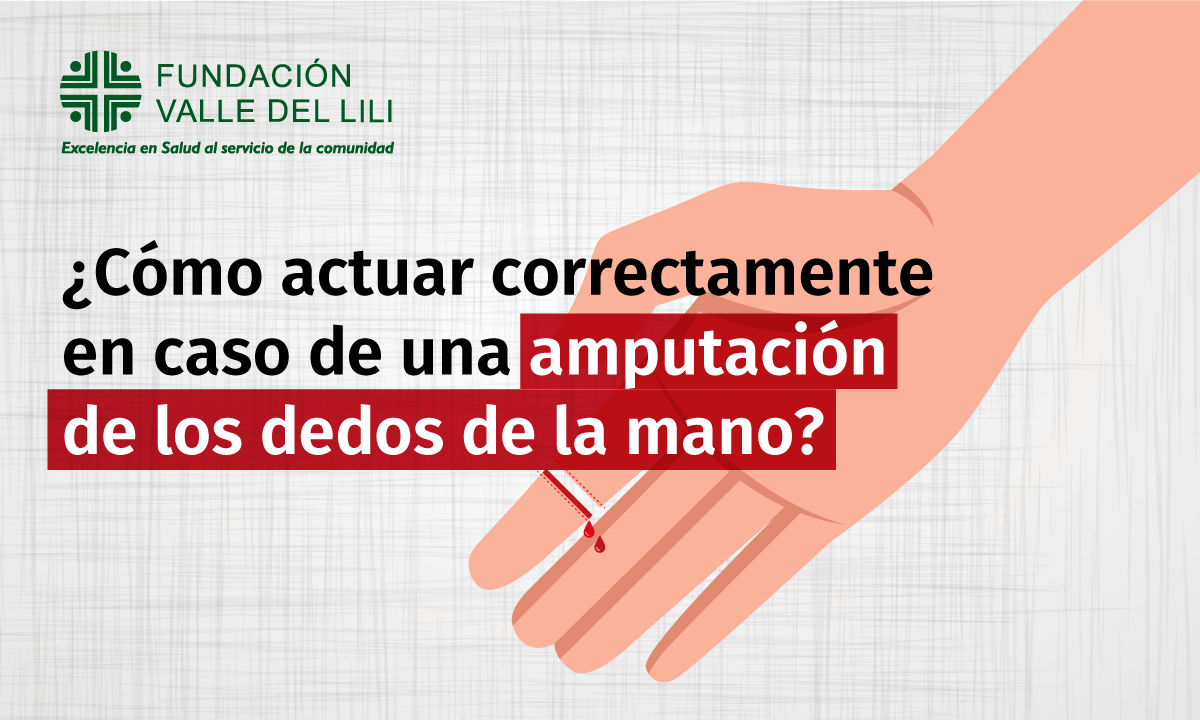Medical Directory
More than 500 full time specialists, who guarantee you appropriate care
View DirectoryO
P
U
P
U
International Medical Care
Click on the overview to see more information about our office
More than 500 full time specialists, who guarantee you appropriate care
View DirectoryClick on the overview to see more information about our office

Accidents where a part of the body is amputated usually happen in places like your workplace, your farm, or at home, and usually, we are not accompanied by someone with the knowledge required to provide adequate assistance. This article aims to give a brief and clear guide on how to act correctly in case of an accidental amputation.
First, try to remain calm; remember that the main objective is to control bleeding, and pressure must be applied to the wound. Avoid applying tourniquets, they can make the situation worse, since they may stop blood supply to the proximal segment of the body, increasing the risk of amputation at a higher level. Amputations may occur in places where plants or animals’ contamination exists, so the wound should be washed with running water at the place where the accident occurred, trying to decontaminate the amputated segment quickly.
How to control bleeding?
Compression should be applied to the wound using any common item, such as a handkerchief, a towel or a garment, which should be as clean as possible. Ideally, sterile dressings should be used, but this type of accident are usually unexpected, so they are not often available.
Compression must be continuous, in order to prevent vessels from bleeding. Do not lose your temper if the bleeding is heavy.
How to transport the amputated segment?
Do not put it in direct contact with ice! People usually believe that it is necessary to “keep the limb amputated on ice”, which is a mistake. Remember that ice also burns, and that is precisely what we must prevent. Ask yourself, how long could you hold an ice cube in your hand? A minute at most, otherwise it would burn your hand; well, it is the same for an amputated segment.
Therefore, it should be transported in a cold medium, avoiding contact between human tissues and ice. Ideally, you should pack it in a portable refrigerator, but as amputations are unexpected, it may not be available.
How can I build a cold medium to transport an amputated tissue?
Sometimes the ideal elements for transportation are not available. A practical alternative is to place ice inside an airtight and hopefully cold insulator container, such as a Styrofoam box or a plastic box with a lid, and cover it with an insulating element, such as sawdust or chopped newspaper, which prevents direct contact between human tissue and ice.
The amputated segment should be protected with a dressing or a towel and it should be inside a bag to keep it dry and isolated from direct contact with ice.
What happens if I do not get these items?
Tissues can last at room temperature for varying periods of time. A finger, for example, may last up to 12 hours at room temperature, and a hand, for a maximum of 6 hours. This means that the time to go to a specialized center is not as short, contrary to popular belief. Therefore, in these cases the ideal is to keep the amputated part clean and dry.
Is it always possible to replant amputated tissues?
Unfortunately, an amputated segment cannot always be replanted. Conditions for replanting are determined by the type of trauma, the site of the trauma and the condition of the patient. Replanting cannot be performed when trauma does not show a well-defined net cut, that is, when it is a blunt trauma, caused by attrition, explosion, or by contusive cutting tools such as a saw, a polisher or in cases where tearing amputation occurs.
Also, replanting cannot be performed in cases of extreme contamination, for instance, with fecal matter, garbage or sewage. In addition, replanting cannot be done in patients with a history of vascular diseases (atherosclerosis) or with vascular compromise, such as autoimmune diseases (lupus, scleroderma, etc.). Amputated segments should not be replanted in cases of patients with smoking habits or patients with a history of mental illness.